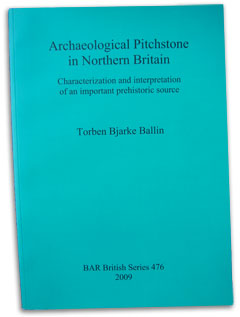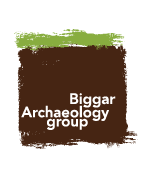The pitchstone finds and assemblages from our various projects now constitute the largest collection of pitchstone from a single area in Scotland outwith Arran itself, the source of the material.

Torben Bjarke Ballin has now published his work titled Archaeological Pitchstone in Northern Britain. The research has increased the known archaeological pitchstone sites from around 100 to 350 and the numbers of pieces from 1400 to 20,300. The book deals comprehensively with the geological sources and types of Arran pitchstone, its archaeological distribution and use and indeed everything you want to know about pitchstone.
Biggar Archaeology Group’s work features prominently in this new work. The details are : Torben Bjarke Ballin 2009, BAR British Series 476, Archaeopress, Oxford, 108 pages, 28 figures, 30 colour plates, 20 tables. ISBN 978 1 407303 86 4. Price £35.00
The pdf pitchstone report featured in this website is featured in this book – it is a shorter, earlier version and doesn’t include the most recent pitchstone finds. It does gives a general description of Biggar pitchstone artefacts, and discusses Biggar’s place in the distribution of pitchstone across Neolithic northern Britain.
Brief research history

Arran pitchstone was first recognized as a significant archaeological raw material in the Biggar area as a result of the Lanark and District Archaeology Society’s pre-forestry fieldwalking project at Corse Law near Carnwath. This project, which was carried out in the late 1980s, recovered 71 pieces of worked pitchstone (Clarke 1989). Since then, the Biggar Archaeology Group has organised repeated, systematic and large scale fieldwalking and excavation programmes. These have resulted in the recovery of the almost 700 pieces of worked pitchstone.

Only one diagnostic tool type was recovered from the excavations and fieldwalking campaigns in the Biggar area, namely, the basal fragment of a chisel-shaped arrowhead. This piece was found during fieldwalking in the Scottish Woodlands Area South, one of a group of closely situated pitchstone-bearing areas that includes Melbourne, Howburn and Brownsbank. The fragmented arrowhead indicates a date probably at the very end of the Early Neolithic period.
Report
- Biggar Pitchstone Special Report | May 2008 | 1.6MB – General characterisations of Biggar pitchstone artifacts, and discussion of Biggar’s role in the distribution of pitchstone across Neolithic Britain.






